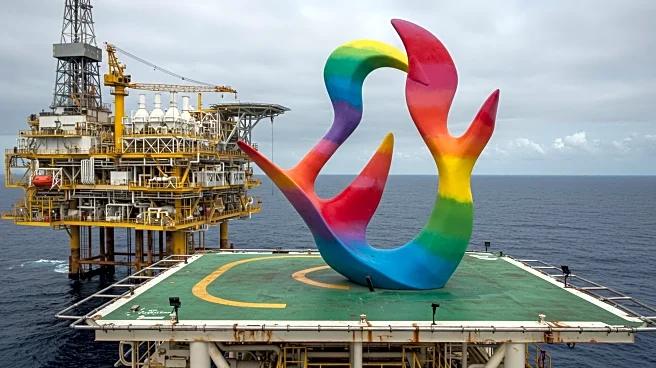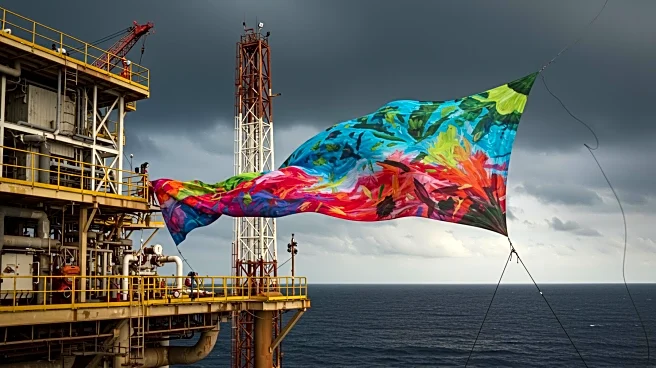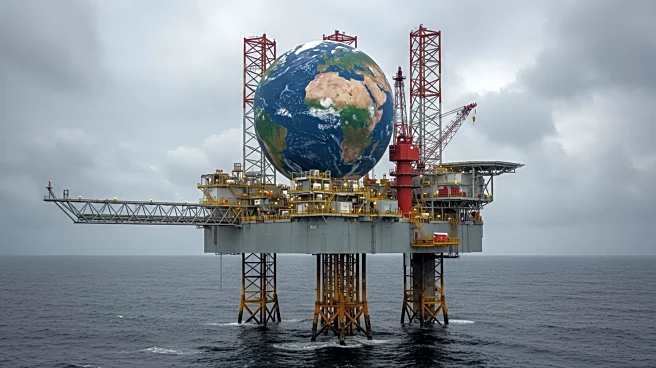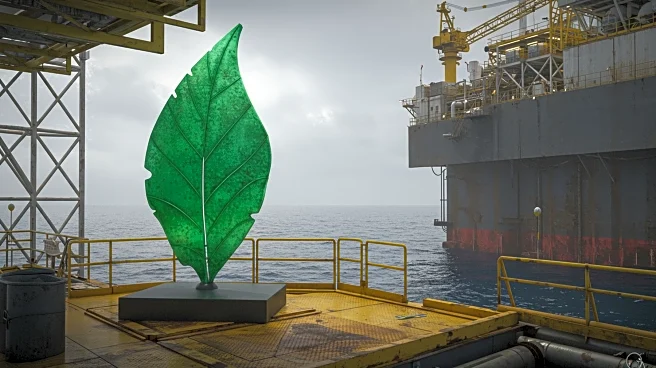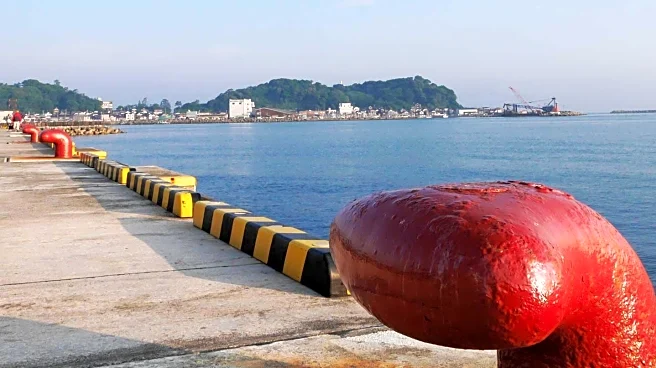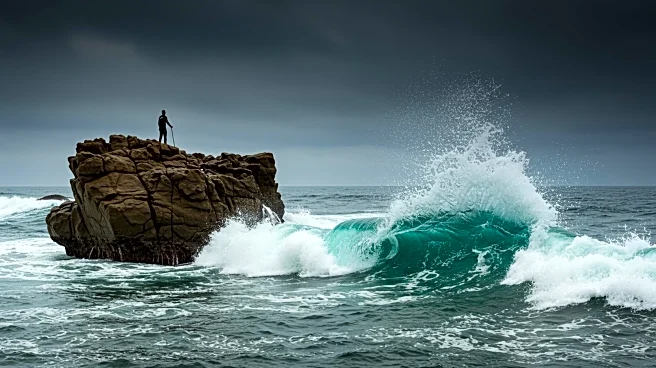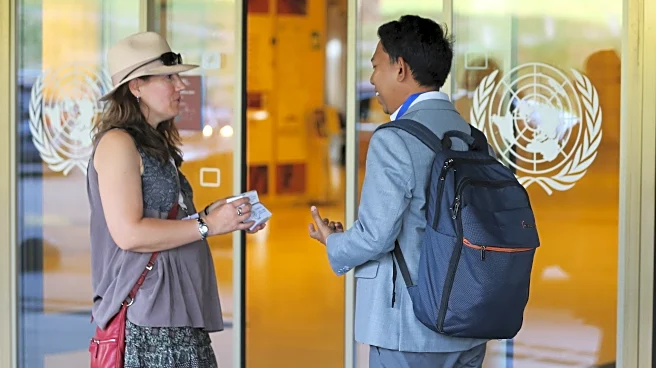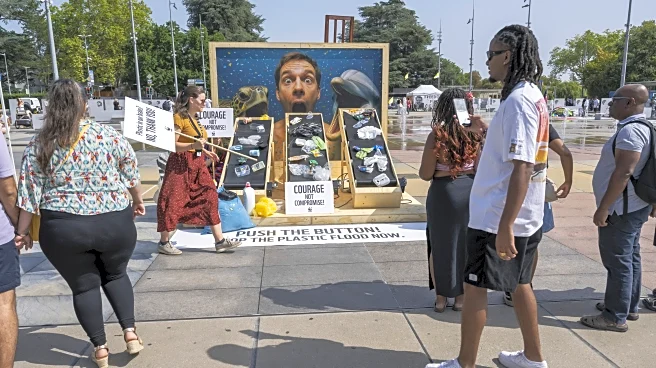What's Happening?
Greenpeace activists have executed a dramatic art protest on a Shell-operated oil rig in the North Sea, featuring a massive artwork by British artist Anish Kapoor. The installation, titled 'Butchered,' consists of a 1,000-square-foot canvas sprayed with blood-red liquid, symbolizing the destructive impact of the fossil fuel industry on humanity and the planet. The action was carried out by a crew aboard Greenpeace's Arctic Sunrise vessel, marking the first time an artwork has been installed at an active offshore gas site. Kapoor, known for his environmental advocacy, collaborated with Greenpeace to create a 'visual scream' against the climate crisis, particularly affecting marginalized communities. The protest coincides with the UK's fourth heatwave of the summer, exacerbating droughts and wildfires, while Shell reports significant profits and plans numerous new oil and gas projects.
Why It's Important?
This protest underscores the ongoing tension between environmental activists and the fossil fuel industry, highlighting the urgent need for climate action. Greenpeace's use of art as a medium for protest aims to draw public attention to the environmental and social costs of fossil fuel extraction. The timing of the protest, amid severe weather events in the UK, emphasizes the real-world impacts of climate change, which disproportionately affect vulnerable populations. The action challenges the oil industry's role in climate destruction, urging a shift towards sustainable energy solutions. As Shell continues to profit from fossil fuels, the protest calls for accountability and change in corporate practices to mitigate climate risks.
What's Next?
Greenpeace's protest may prompt further scrutiny of Shell's environmental practices and influence public discourse on climate change. The action could inspire similar protests and increase pressure on governments and corporations to transition to renewable energy sources. Shell's response, or lack thereof, may affect its public image and stakeholder relations. The protest may also lead to discussions on the role of art in activism and its effectiveness in driving social change. As climate impacts intensify, stakeholders across industries may face growing demands for sustainable practices and policies.
Beyond the Headlines
The protest raises ethical questions about the responsibility of corporations in addressing climate change and the role of activism in holding them accountable. It highlights the power of art to convey complex social issues and engage diverse audiences. The collaboration between Kapoor and Greenpeace reflects a broader trend of artists using their platforms for social and environmental advocacy. The protest may influence cultural perceptions of the fossil fuel industry and contribute to a shift in public attitudes towards climate action.
